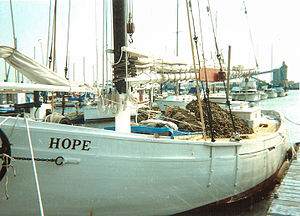
The Bermuda sloop is a type of fore-and-aft rigged single-masted sailing vessel developed on the islands of Bermuda in the 17th century. Such vessels originally had gaff rigs with quadrilateral sails, but evolved to use the Bermuda rig with triangular sails. Although the Bermuda sloop is often described as a development of the narrower-beamed Jamaica sloop, which dates from the 1670s, the high, raked masts and triangular sails of the Bermuda rig are rooted in a tradition of Bermudian boat design dating from the earliest decades of the 17th century. It is distinguished from other vessels with the triangular Bermuda rig, which may have multiple masts or may not have evolved in hull form from the traditional designs.
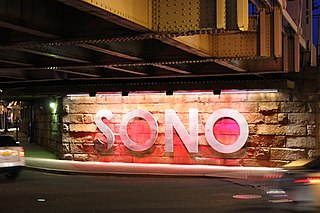
South Norwalk is a neighborhood and the Second Taxing District in Norwalk, Connecticut. The neighborhood was originally a settlement called 'Old Well' which became chartered as the city of 'South Norwalk' on August 18, 1870. The cities of Norwalk and South Norwalk were incorporated on June 6, 1913. The neighborhood is often referred to with the acronym 'SoNo'.

Northwest Seaport Maritime Heritage Center is a nonprofit organization in Seattle, Washington dedicated to the preservation and interpretation of Puget Sound and Northwest Coast maritime heritage, expressed through educational programs and experiences available to the public aboard its ships. The organization owns three large historic vessels docked at the Historic Ships' Wharf in Seattle's Lake Union Park; the tugboat Arthur Foss (1889), Lightship 83 Swiftsure (1904), and the halibut fishing schooner Tordenskjold (1911). These vessels are used as platforms for a variety of public programs, ranging from tours and festivals to restoration workshops and vocational training.

Sharpies are a type of hard chined sailboat with a flat bottom, extremely shallow draft, centreboards and straight, flaring sides. They are believed to have originated in the New Haven, Connecticut region of Long Island Sound, United States. They were traditional fishing boats used for oystering, and later appeared in other areas. With centerboards and shallow balanced rudders they are well suited to sailing in shallow tidal waters.

The Maritime Aquarium at Norwalk is an aquarium located in the South Norwalk section of Norwalk, Connecticut.

A Beetle Cat is a 12-foot-4-inch (3.76 m) catboat first built in 1920 in New Bedford, Massachusetts by members of the Beetle family. Over 4,000 have been built. Beetle, Inc., now in Wareham, Massachusetts, is the sole builder of Beetle Cat boats.
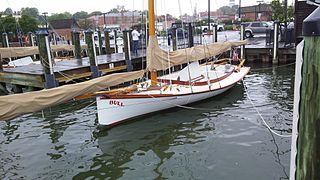
A sandbagger sloop is a type of sailboat made popular in the 19th century as a work vessel which also could be used as a pleasure craft. They are a descendant of shoal-draft sloops used in oyster fishing in the shallow waters of New York Bay The term "sandbagger" refers to the use of sandbags to shift the boat's center of gravity in order to obtain the most power from the sails. In practice, the sandbags were actually filled with gravel in order to keep them from retaining excessive amounts of water.
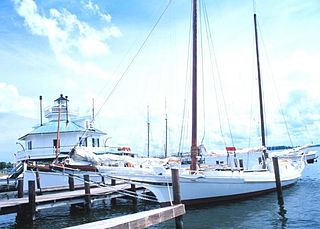
The bugeye is a type of sailboat developed in the Chesapeake Bay for oyster dredging. The predecessor of the skipjack, it was superseded by the latter as oyster harvests dropped.
Charles Drown Mower of New York was a noted yacht designer and author, and was at one time design editor of the Rudder magazine and a contributing author to Motor Boating magazine.
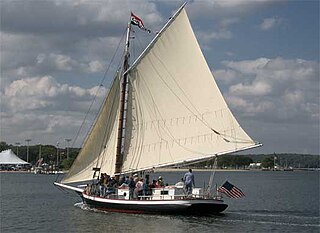
Christeen is the oldest oyster sloop in the United States and was declared a National Historic Landmark in 1992.

Priscilla is a classic oyster dredging sloop that was designated a National Historic Landmark in 2006. It is berthed near the Modesty, another National Historic Landmark sloop at the Long Island Maritime Museum.

Modesty was an oyster sloop built in 1923 by The Wood and Chute Shipyard of Greenport, Long Island. Modeled after the catboat Honest, which was built in 1892 by Jelle Dykstra on the west bank of Greens Creek, West Sayville, Modesty was built as a gaff-rigged sloop, but retained the extreme beam of a catboat. For auxiliary power, a two-cylinder Gafka gasoline engine was installed.

The Spaulding Marine Center, , in Sausalito, California, is a living museum where one can go back in time to experience the days when craftsmen and sailors used traditional skills to build, sail or row classic wooden boats on San Francisco Bay.
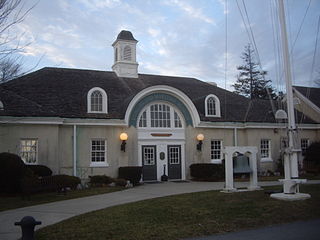
The Long Island Maritime Museum is located in West Sayville, New York.
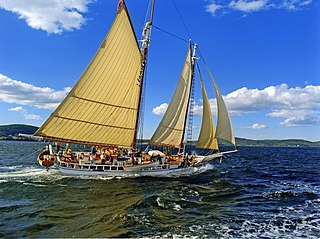
Isaac H. Evans, originally Boyd N. Sheppard, is a two-masted schooner berthed in Rockland, Maine. She is a Maine windjammer, serving the tourist trade. Built in 1886 in Mauricetown, New Jersey, she is the oldest of a small number of surviving oyster schooners, used in service of the oyster harvesting industry in the coastal waters of New Jersey. She was declared a National Historic Landmark in 1992.
Norwalk Harbor is a recreational and commercial harbor and seaport at the estuary of the Norwalk River where it flows into Long Island Sound in Norwalk, Connecticut, United States.

The Rebecca T. Ruark is a Chesapeake Bay skipjack built at Taylor's Island, Maryland. She is homeported at Tilghman Island, Maryland. Built in 1896, she is the oldest surviving skipjack in the Chesapeake Bay fleet. She was designated a National Historic Landmark in 2003.

The Humber Keel was a type of sail craft used for inshore and inland cargo transport around Hull and the Humber Estuary, in the United Kingdom, particularly through the late 19th and early 20th centuries.
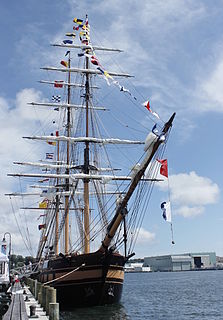
SSV Oliver Hazard Perry is a tall ship operated by Oliver Hazard Perry Rhode Island (OHPRI) a grass-roots non profit based in Newport. The ship is the named after the American Commodore Oliver Hazard Perry (1785–1819), the hero of the naval Battle of Lake Erie (1813).
